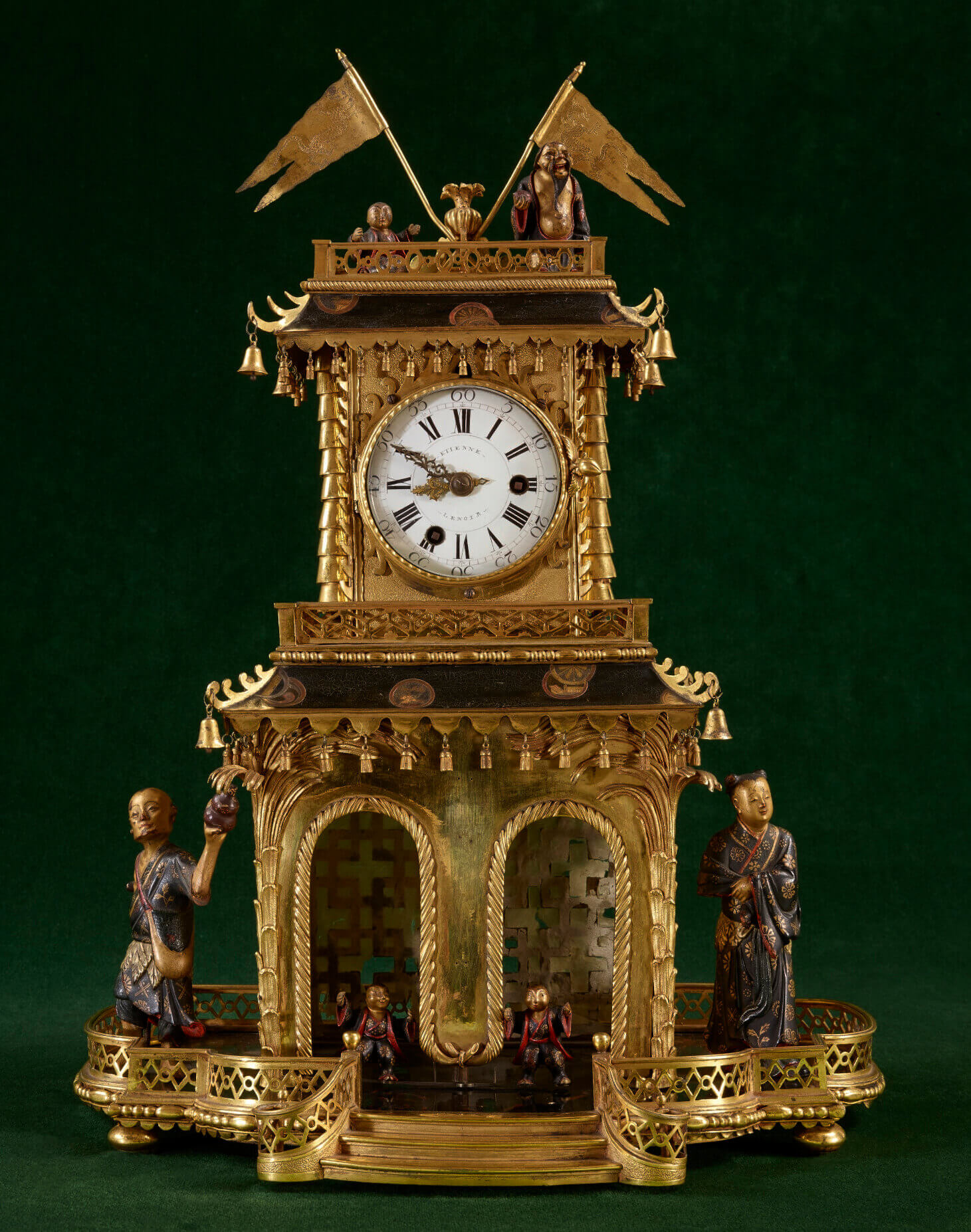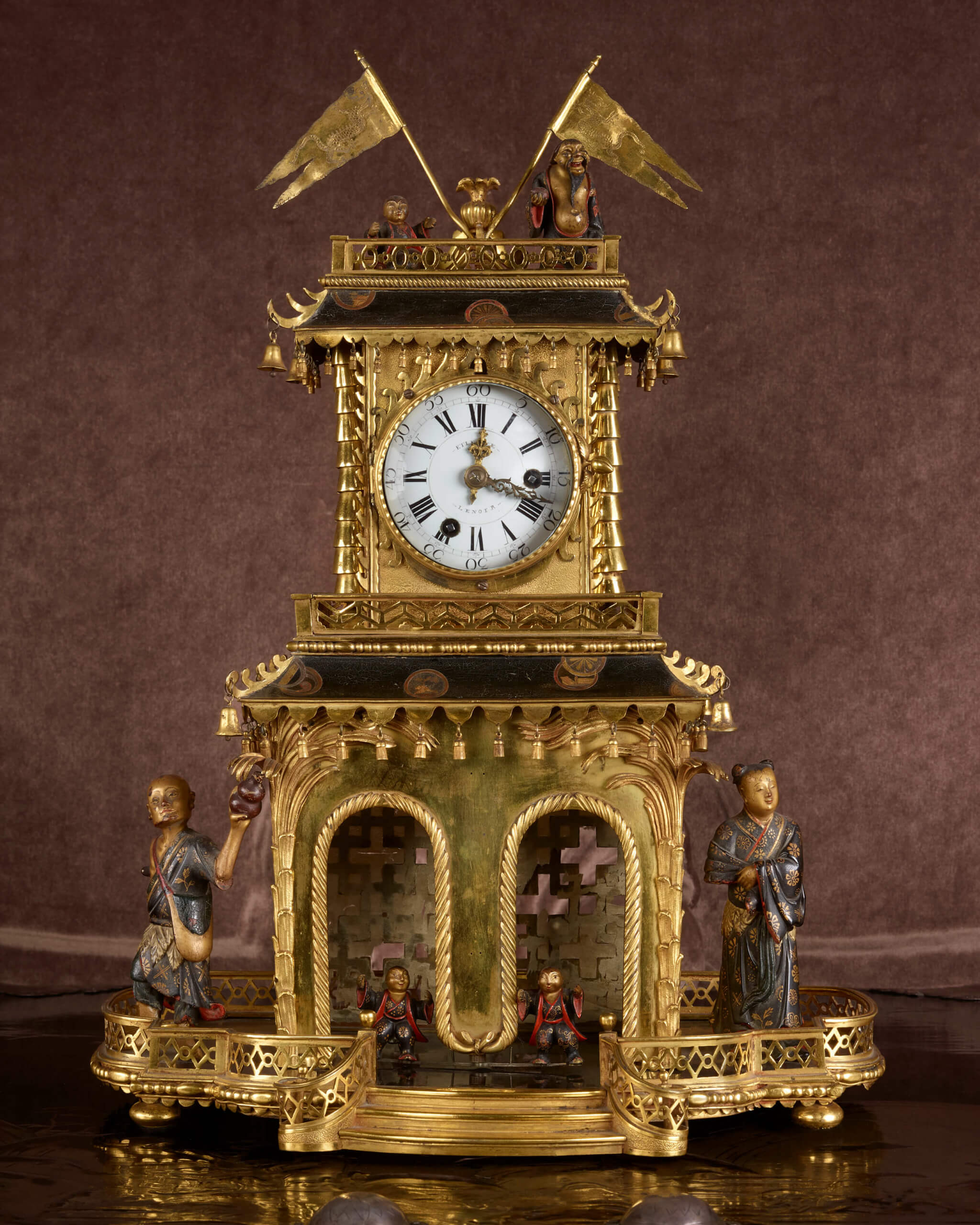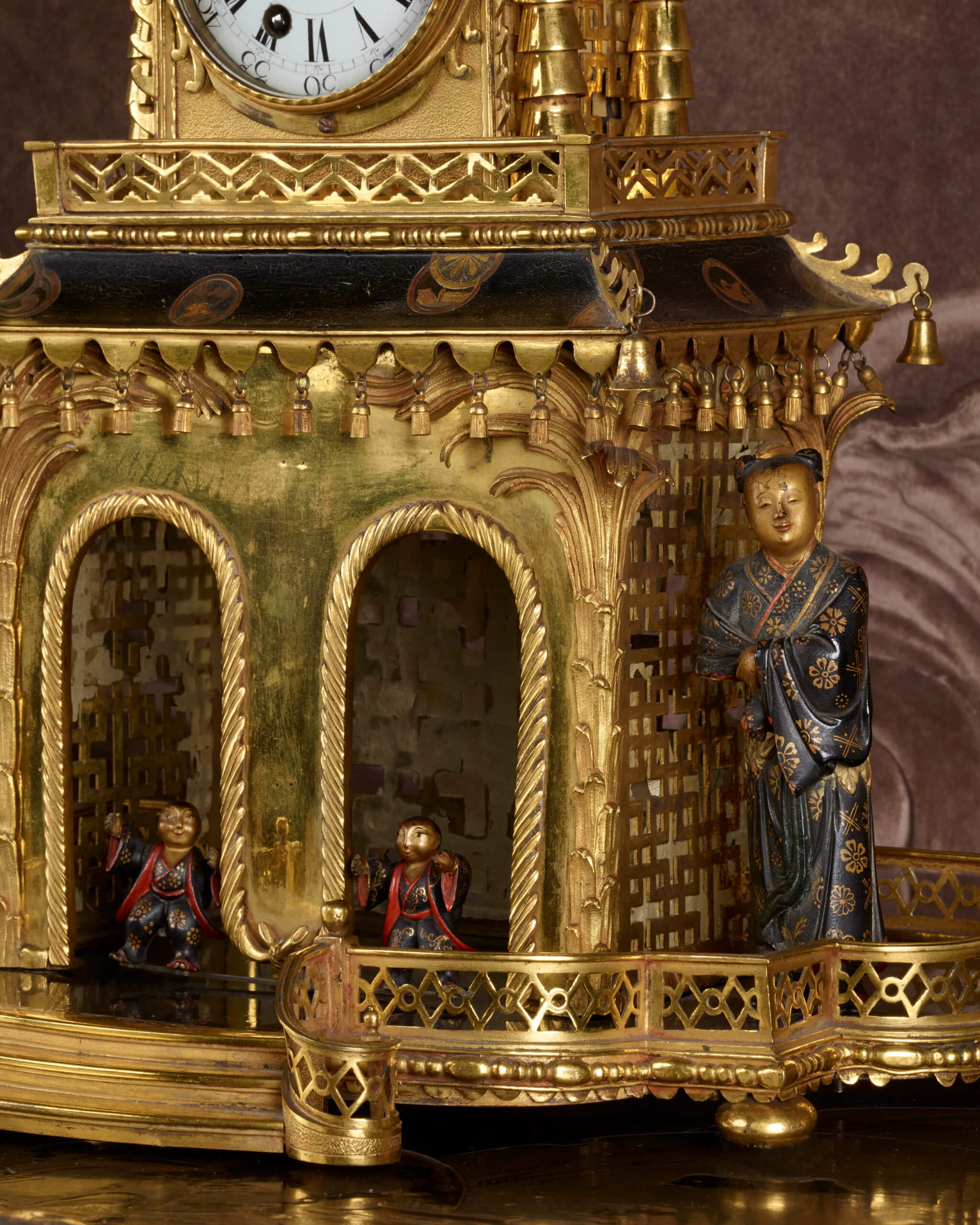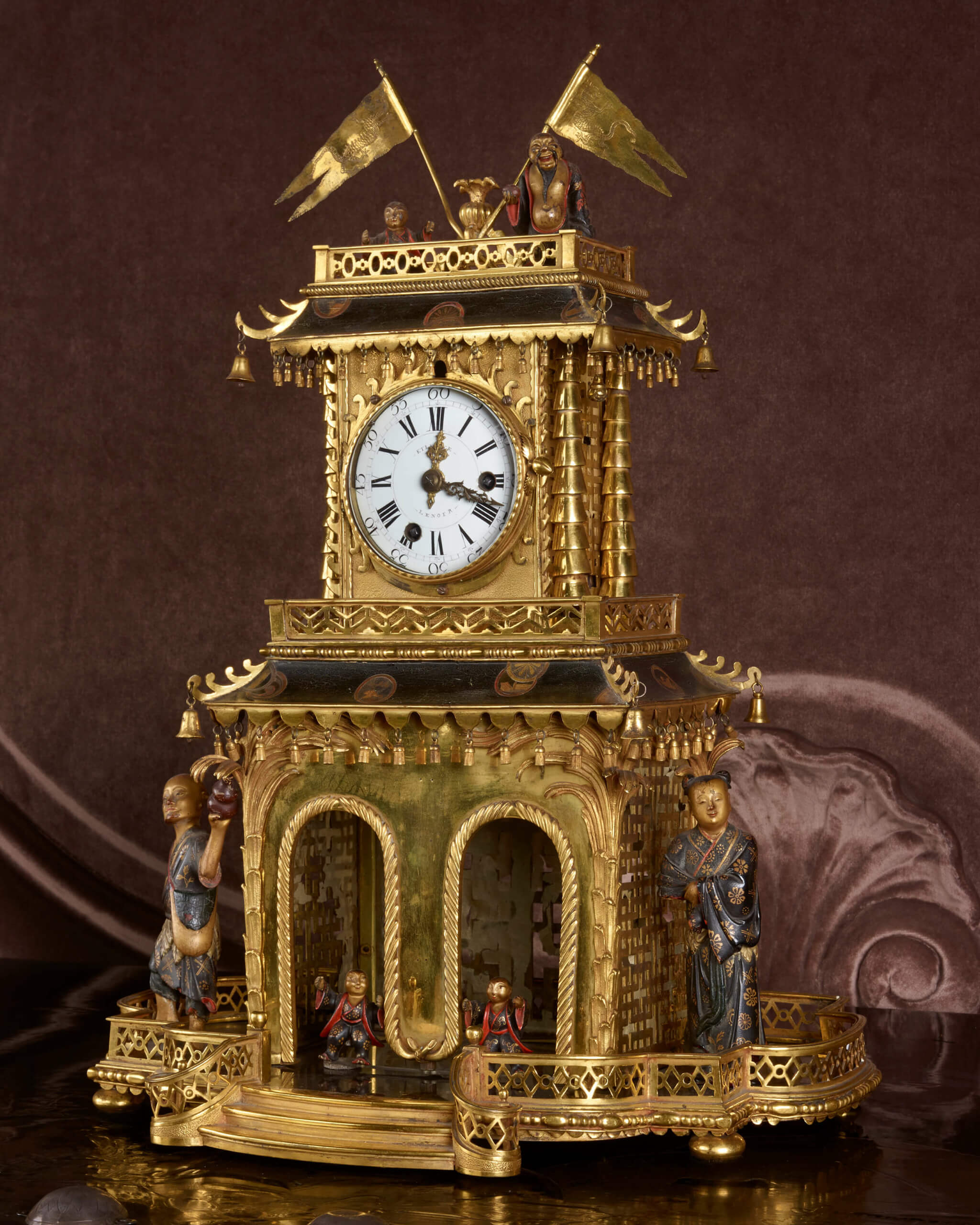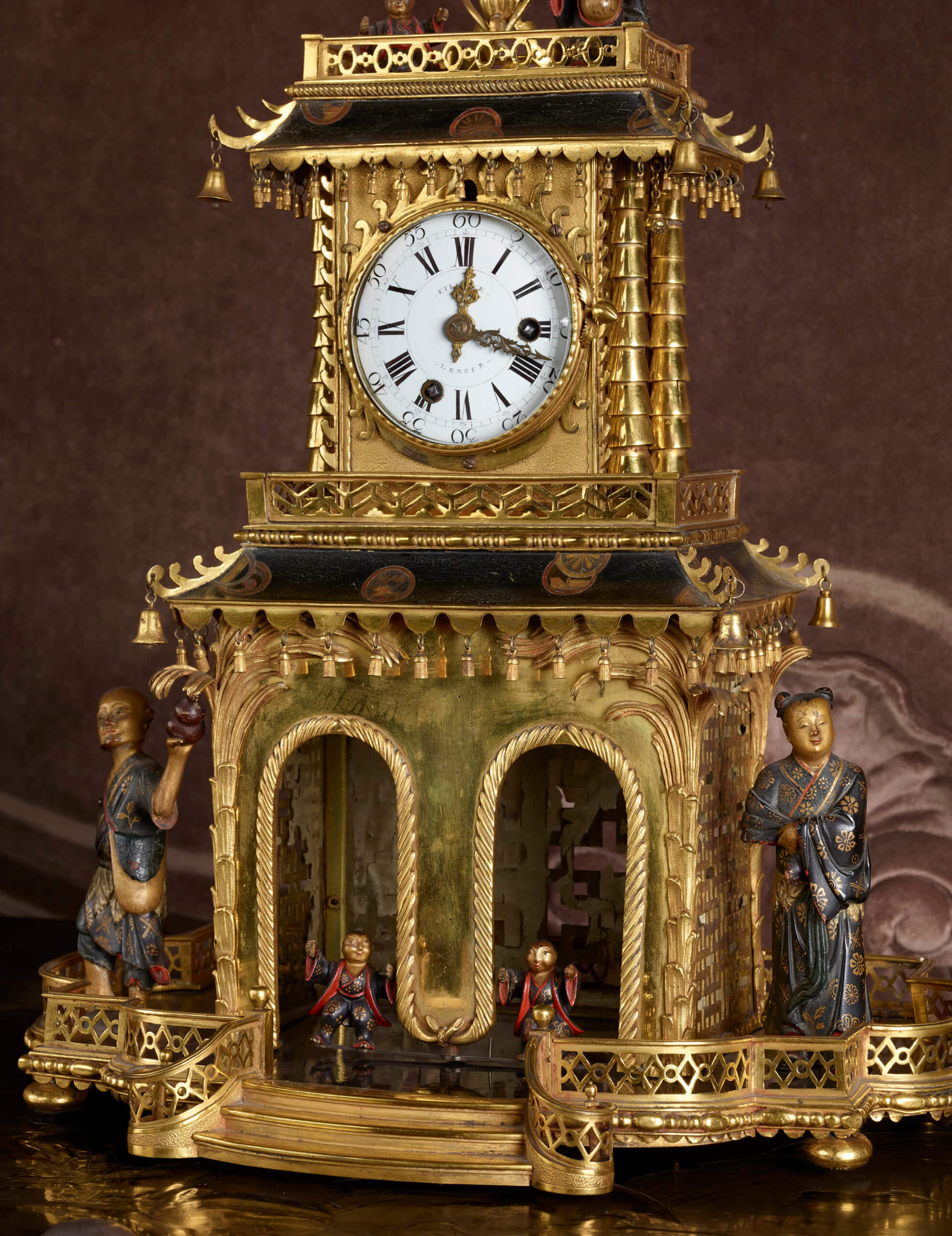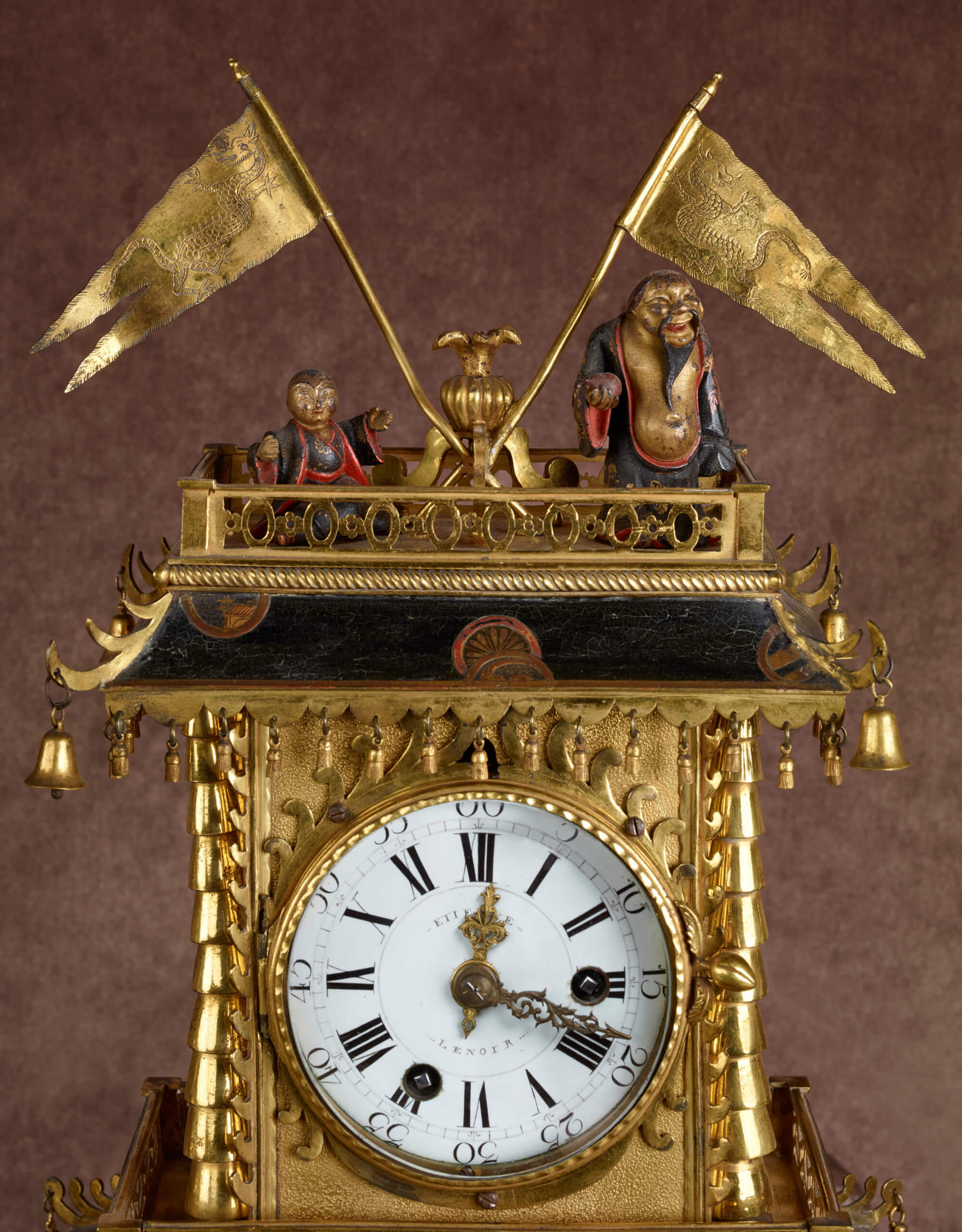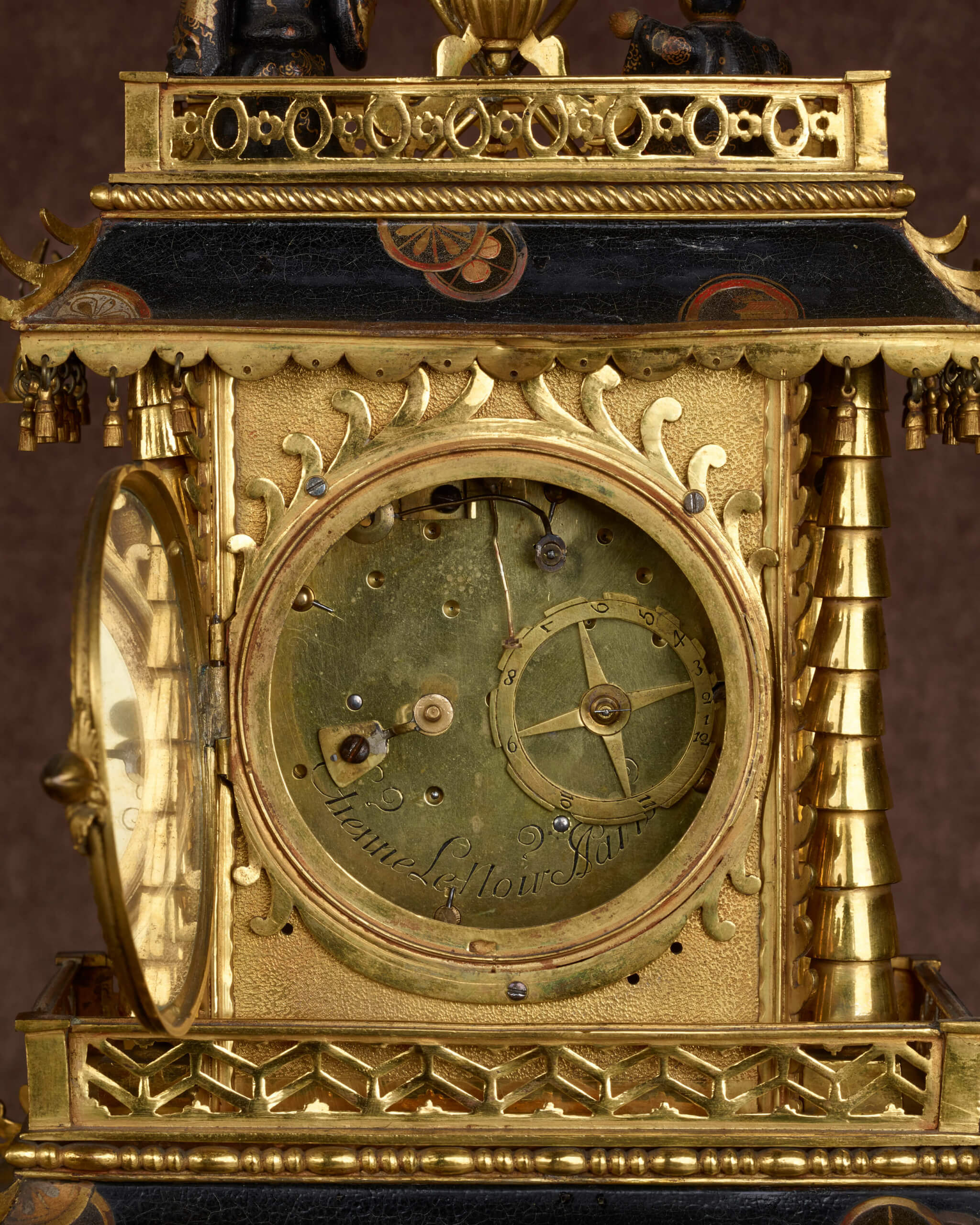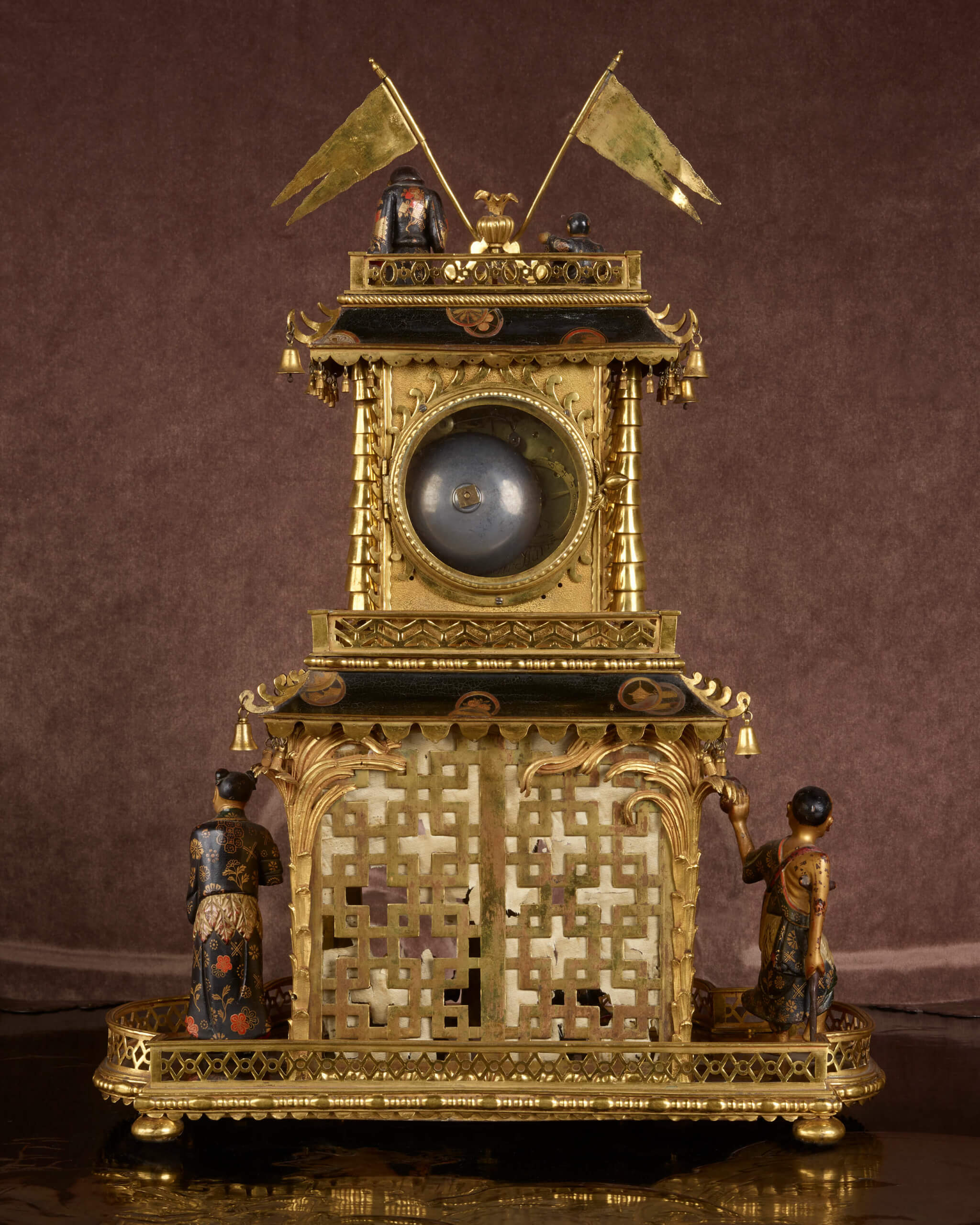

ÉTIENNE II LE NOIR (PARIS, 1699-1778, MASTER IN 1717) & HIS SON PIERRE-ÉTIENNE LE NOIR (1724–AFTER 1789, MASTER IN 1743).
Chiselled bronze, gilded and lacquered in black and gold with red highlights; enamel; metal; glass.
Small personages in carved and décor of Martin varnish: France, 18th century.
H. 44 cm. (17 ½ in.); W. 32.5 cm. (12 ¾ in.); D. 24 cm. (9 ½ in.).
The dial is signed: “Etienne/Lenoir” and the movement: “Etienne Lenoir à Paris”.
LITERATURE : Stéphane Faniel (under the direction of), Le Dix-huitième Siècle Français, Collection Connaissance des Arts, Paris, 1956, p. 41, fig. A.
The fascination with pagodas in France and Europe in the 18th century can be traced back to the famous Pagoda near Nanking, with its forecourt, mausoleums, walkways, baths and magnificent nine-storey porcelain tower, first published by Jan Nieuhoff in 1665. From Le Vau’s porcelain Trianon to the many pagoda-shaped pavilions that populated all areas of the decorative arts throughout the 18th century, the Nanjing pagoda always came to mind. Our clock is a rare testimony to this clockmaking vogue of the Louis XV period.
Adorned with a movement and a dial signed Etienne Le Noir – Etienne II Le Noir and his son Pierre-Etienne Le Noir were among the most renowned master watchmakers of their time – our clock was reproduced in 1956 in Stéphane Faniel’s book Le Dix-huitième Siècle Français, Collection Connaissance des Arts.
